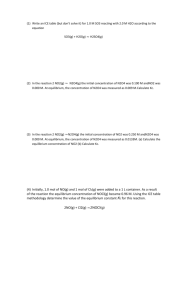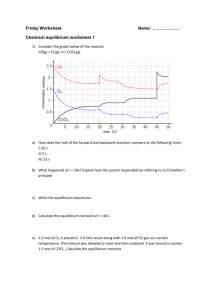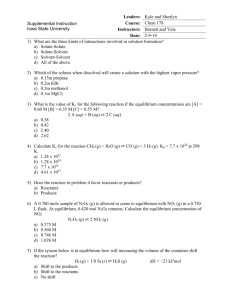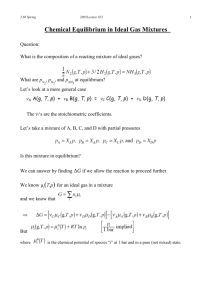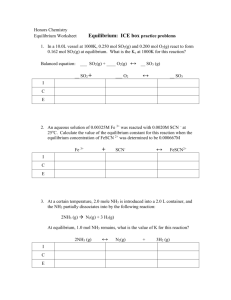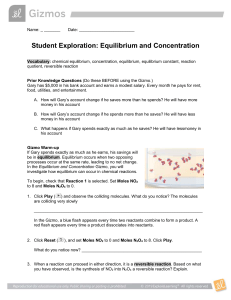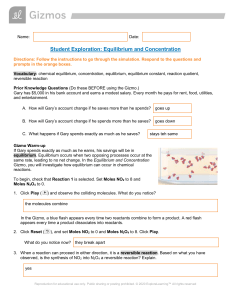Extension worksheet – Topic 6
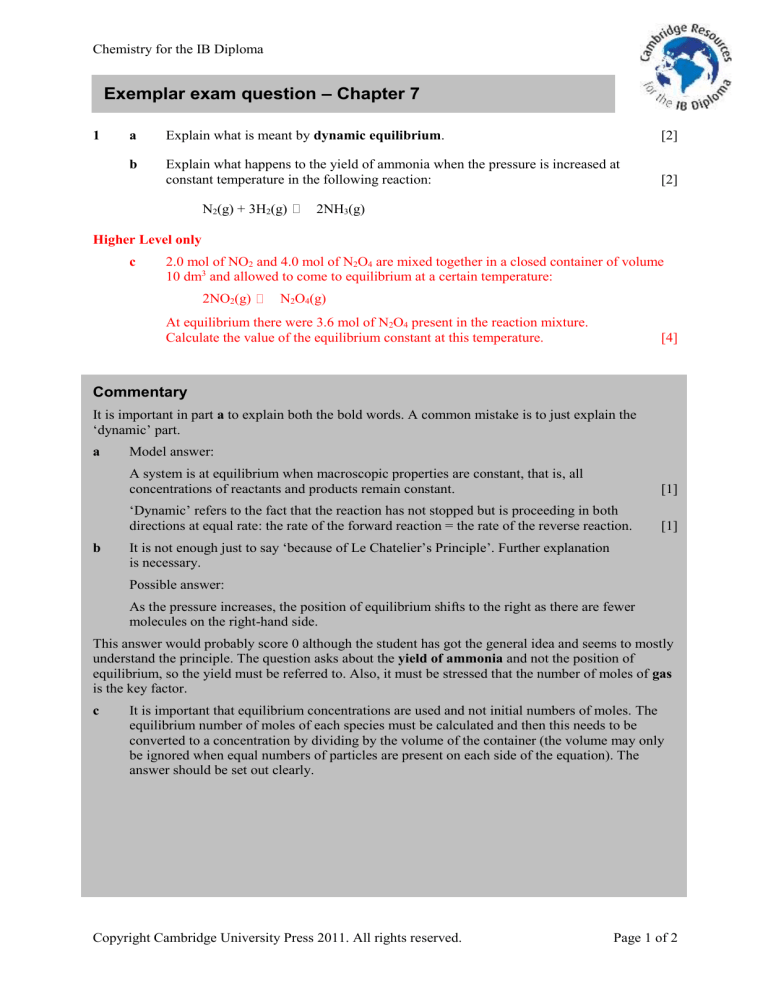
Chemistry for the IB Diploma
Exemplar exam question – Chapter 7
1 a Explain what is meant by dynamic equilibrium . b Explain what happens to the yield of ammonia when the pressure is increased at constant temperature in the following reaction:
N
2
(g) + 3H
2
(g) 2NH
3
(g)
[2]
[2]
Higher Level only c 2.0 mol of NO
2
and 4.0 mol of N
2
O
4
are mixed together in a closed container of volume
10 dm 3 and allowed to come to equilibrium at a certain temperature:
2NO
2
(g) N
2
O
4
(g)
At equilibrium there were 3.6 mol of N
2
O
4
present in the reaction mixture.
Calculate the value of the equilibrium constant at this temperature. [4]
Commentary
It is important in part a to explain both the bold words. A common mistake is to just explain the
‘dynamic’ part. a Model answer:
A system is at equilibrium when macroscopic properties are constant, that is, all concentrations of reactants and products remain constant. [1]
‘Dynamic’ refers to the fact that the reaction has not stopped but is proceeding in both directions at equal rate: the rate of the forward reaction = the rate of the reverse reaction. [1] b It is not enough just to say ‘because of Le Chatelier’s Principle’. Further explanation is necessary.
Possible answer:
As the pressure increases, the position of equilibrium shifts to the right as there are fewer molecules on the right-hand side.
This answer would probably score 0 although the student has got the general idea and seems to mostly understand the principle. The question asks about the yield of ammonia and not the position of equilibrium, so the yield must be referred to. Also, it must be stressed that the number of moles of gas is the key factor. c It is important that equilibrium concentrations are used and not initial numbers of moles. The equilibrium number of moles of each species must be calculated and then this needs to be converted to a concentration by dividing by the volume of the container (the volume may only be ignored when equal numbers of particles are present on each side of the equation). The answer should be set out clearly.
Copyright Cambridge University Press 2011. All rights reserved. Page 1 of 2
Chemistry for the IB Diploma
Model answer:
0.4 moles of N
2
O
4
have reacted to form the equilibrium mixture; this produces 0.8 mol NO
2 therefore the total number of moles of NO equilibrium concentrations:
2
at equilibrium is 2.8 mol
NO
2
=
2.8
= 0.28 mol dm
–3
10
N
2
O
4
=
3.6
= 0.36 mol dm -3
10
The question is now straightforward, to work out a value of the equilibrium constant:
[1]
[1]
[1] equilibrium constant =
[NO ]
2
= 4.6 (mol
–1
dm 3 ) [1]
The units are usually omitted from equilibrium constants. A common mistake is to forget to square the concentration of the NO
2
.
Copyright Cambridge University Press 2011. All rights reserved. Page 2 of 2


